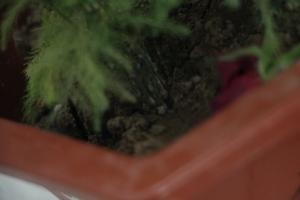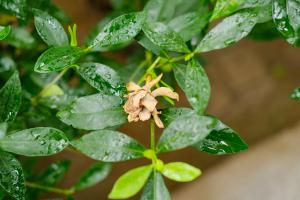Introduction
Corn is a staple crop in many countries around the world, but it can be vulnerable to pests and diseases. One way to combat these issues is by planting companion plants alongside your corn. Companion planting is the practice of growing different plants together to provide benefits and protection for each other. In this article, we will explore the best companion plants to grow with corn.
Benefits of Companion Plants for Corn
Companion plants provide various benefits to corn. They can help to deter pests and attract beneficial insects. Certain plants can also improve soil quality by fixing nitrogen, reducing erosion and increasing soil fertility, which can result in better yields. Companion plants can also change the microclimate around the corn by shading it, reducing wind speed and evapotranspiration which can prevent the soil from drying out and increase water retention.
Best Companion Plants for Corn
1. Beans: Beans and corn have a complementary relationship. Beans fix nitrogen in the soil, which corn needs to grow. They can also repel pests such as corn leaf beetles and Mexican bean beetles, reducing the need for pesticides. Plant bush beans alongside your corn, so they don’t shade the corn too much.
2. Squash: Squash plants can provide shade to the soil around the corn, helping to retain moisture and regulate soil temperature. They can also help to deter pests like squash bugs and cucumber beetles, which can damage young corn plants. Plant squash in between rows of corn.
3. Cucumbers: Cucumbers can also provide shade to the soil around the corn, reducing evaporation and preventing soil erosion. Cucumbers also attract pollinators such as bees, which are essential for corn to develop properly. Plant cucumbers in between rows of corn, and provide them with a trellis to climb on.
4. Pumpkins: Pumpkins can provide shade and retain moisture around the corn. They can also attract pollinators like bees and butterflies. Plant pumpkins in between rows of corn, and allow them to spread out to provide as much shade and soil cover as possible.
5. Radishes: Radishes can help to deter pests such as corn borers and flea beetles. They also improve soil quality by breaking up compacted soil and releasing nutrients. Plant radishes in between rows of corn, and harvest them before they become too large.
Conclusion
Planting companion plants alongside corn can provide a range of benefits, from deterring pests and attracting pollinators to improving soil quality and increasing yields. To get the best results, choose plants that have a complementary relationship with corn and provide the required benefits. Some of the best companion plants for corn include beans, squash, cucumbers, pumpkins, and radishes. By incorporating companion planting into your corn-growing strategy, you can enjoy healthy plants and a bountiful harvest.

 how many times do yo...
how many times do yo... how many planted tre...
how many planted tre... how many pine trees ...
how many pine trees ... how many pecan trees...
how many pecan trees... how many plants comp...
how many plants comp... how many plants can ...
how many plants can ... how many plants and ...
how many plants and ... how many pepper plan...
how many pepper plan...






























